
St. Isaac's Square (St. Isaac's Cathedral Square) is one of the main squares of St. Petersburg, located in the heart of the city.
Along with the other two squares: Palace and Senatskaya, - St. Isaac's Square traditionally belongs to the architectural ensemble of the central historical squares of the city.
From the north, St. Isaac's Square is bounded by Admiralteiskiy Prospekt and Alexander Garden, and from the south - the Mariinsky Palace.
Due to the current location in the Mariinsky Palace of the Legislative Assembly of St. Petersburg, St. Isaac's Square is also considered the main administrative square of the city.
As part of the historical development of the center of St. Petersburg, the square is included in the UNESCO World Heritage List.
The history of St. Isaac's Square dates back to the 18th century.
Subsequently, the appearance of the square changed, the square also changed its names and borders, new buildings were erected on the square.
St. Isaac's Square hosts various mass events, including public meetings, festivals and concerts.
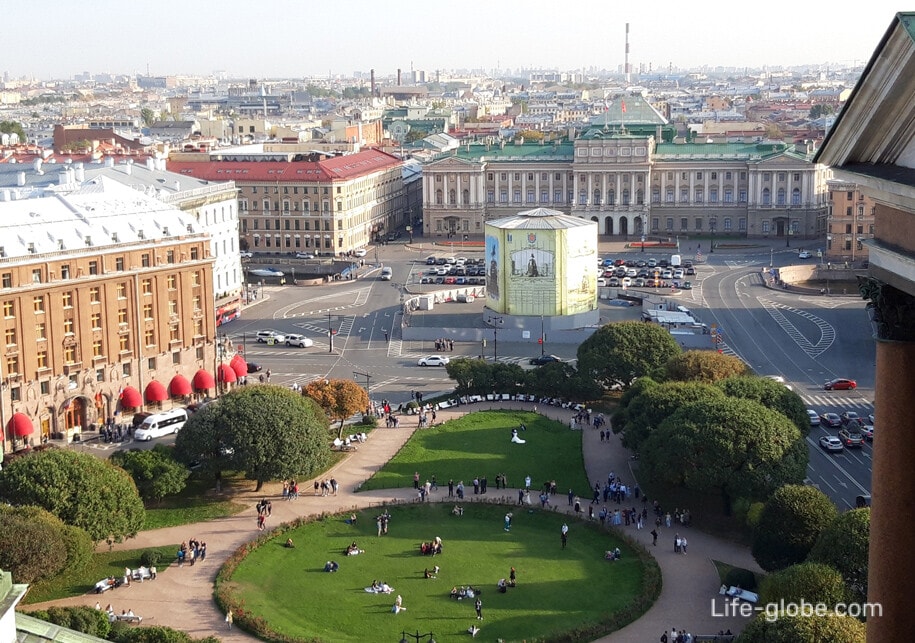
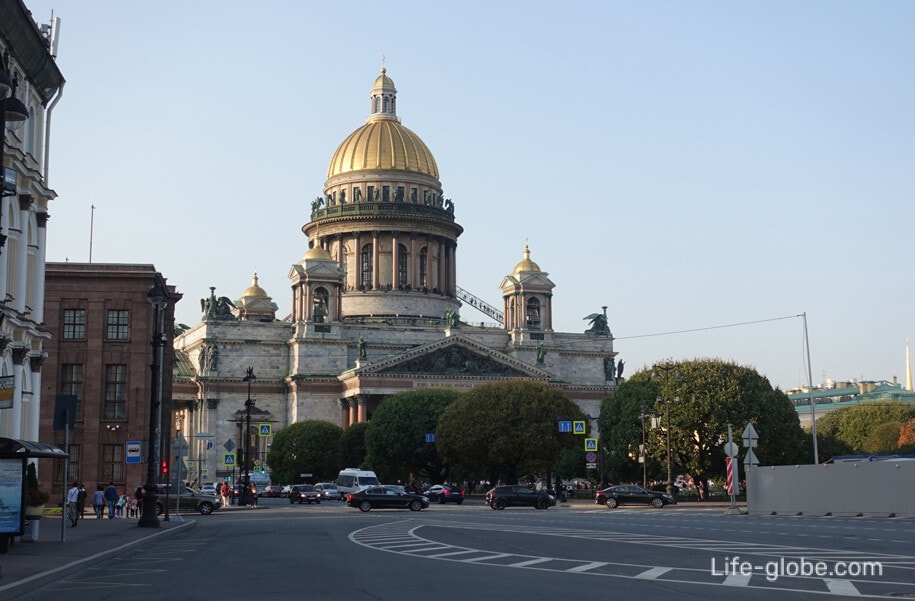
Today, the architectural appearance of St. Isaac's Square is a complex of historically significant buildings.
In the center of the square is the eponymous St. Isaac's Square and there is a monumental monument to Nicholas I.
St. Isaac's Square was created under the Emperor Alexander II by the project of Grigory Karpov, with the assistance of Yegor Odintsovo. The opening of the square took place in July 1860.
During the siege during the Great Patriotic War, the square was used for growing vegetables.
Today, St. Isaac's Square is a place of recreation in the center of St. Petersburg. It has an irregular trapezoidal shape, with an area of 0.77 hectares.
In the center of the square there is a lawn and a large round flower bed. In the square there are paths, there are places for recreation and lanterns are installed. Learn more about St. Isaac's Square…
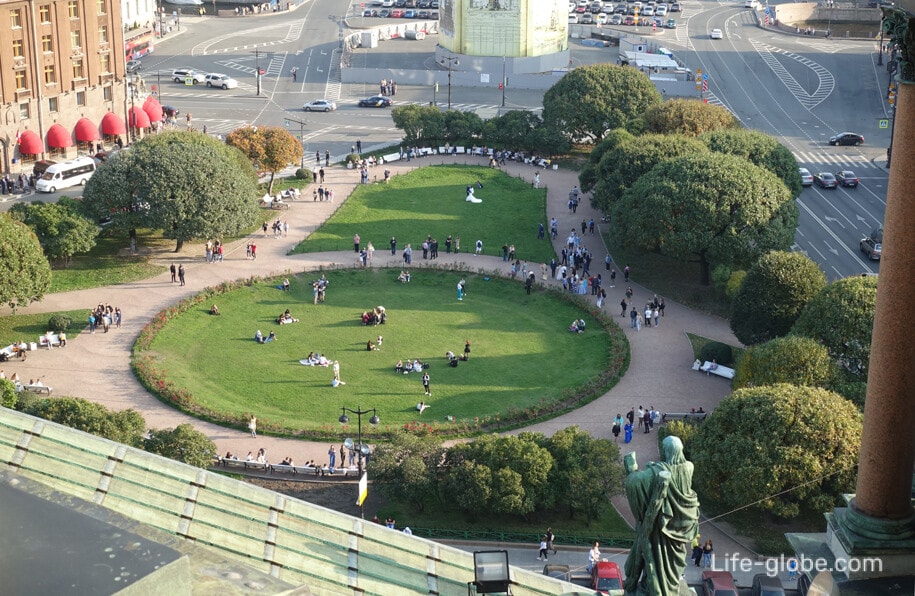
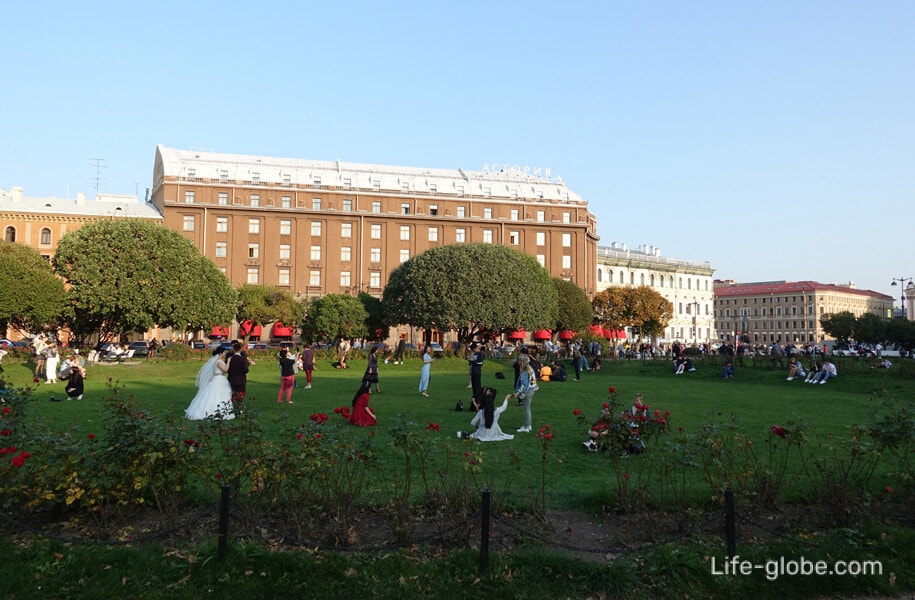
The Monument to Nicholas I is an equestrian monument built in 1856-1859 and erected in honor of the Russian Emperor Nicholas I.
The monument is an example of the neo-Baroque architectural style, and its authors were the architect Auguste Montferrand and the sculptor P. K. Klodt.
The equestrian statue of Nicholas I is set on a high pedestal of elliptical shape, decorated with female allegorical figures symbolizing "Strength", "Wisdom", "Faith"and " Justice". The prototypes of the heads of female statues were the wife (Alexandra Feodorovna) and three daughters (Maria, Alexandra and Olga) of the emperor. The pedestal is also decorated with four high reliefs, which reflect the main events during the reign of Nicholas I: the suppression of the Decembrist uprising, the pacification of the cholera riot, the construction of the Nikolaev railway and the compilation of the code of laws.
On the pedestal there is a 6-meter equestrian statue of Nicholas I. The Emperor is depicted majestically sitting on a dashing rearing horse. Nicholas I is dressed in the full dress uniform of the Life Guards of the Horse Regiment. The equestrian nature of the sculpture was the favorite stallion of the emperor - Amalatbek.
The uniqueness of the monument is that it rests on only 2 points - the hind hooves of a horse.
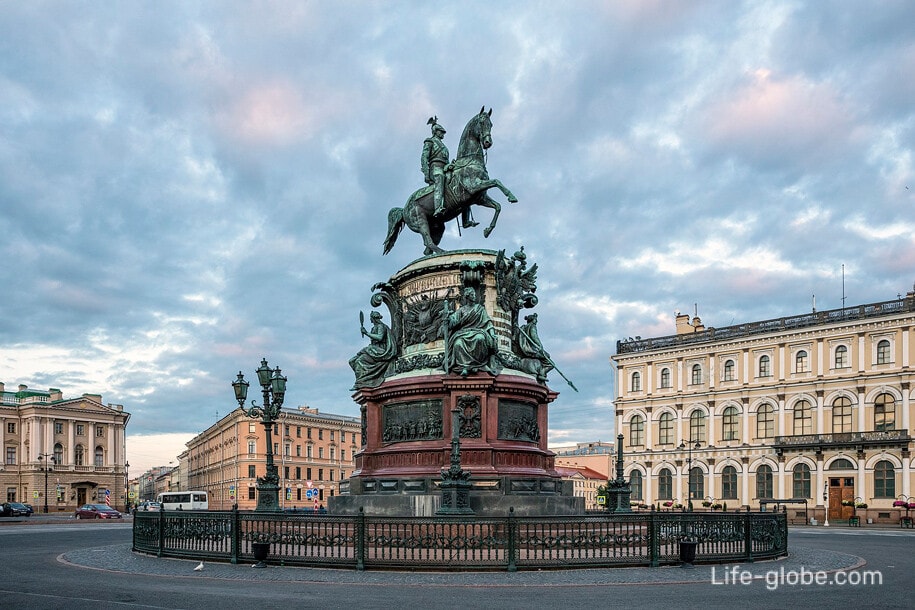
The architectural dominant of the northern side of the square is the majestic St. Isaac's Cathedral.
Today's St. Isaac's Cathedral is the fourth church built in St. Petersburg in the name of St. Isaac of Dalmatia. The first two are not preserved. The part from the third cathedral became part of today's one - the altar part.
Fourth (current) St. Isaac's Cathedral was built from 1818 to 1858 by the French-born architect Auguste Montferrand.
The cathedral is designed in the style of late classicism and is an Orthodox church, also has the status of a museum. Services and concerts are held in the cathedral.
The entrance to the cathedral is paid, and includes a tour service.
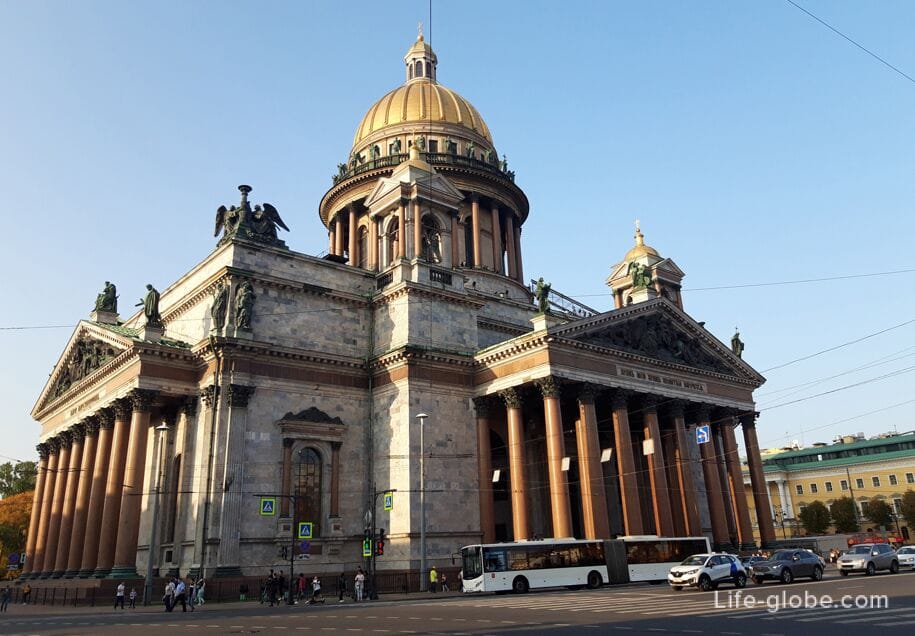
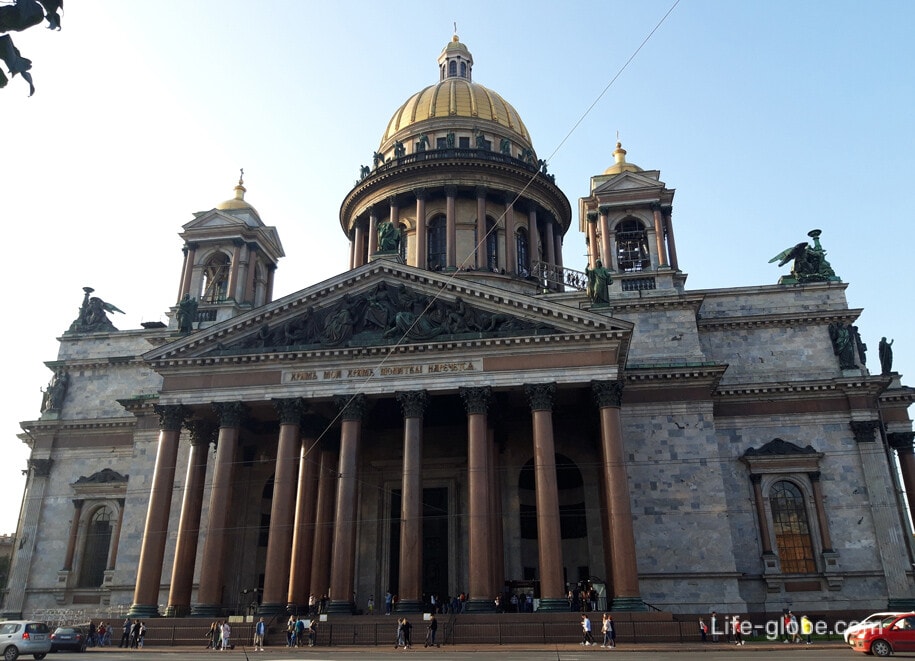
The interior of St. Isaac's Cathedral is designed in an eclectic style. It has richly decorated decoration, including mosaics, paintings and stone.
The interior of the cathedral is divided into three naves by massive ceilings with arched openings (aisles).
In the cathedral there are altars: the main one is dedicated to Isaac of Dalmatia, the other two-to the Great Martyr Catherine and the Blessed Alexander Nevsky. Read more about St. Isaac's Cathedral…
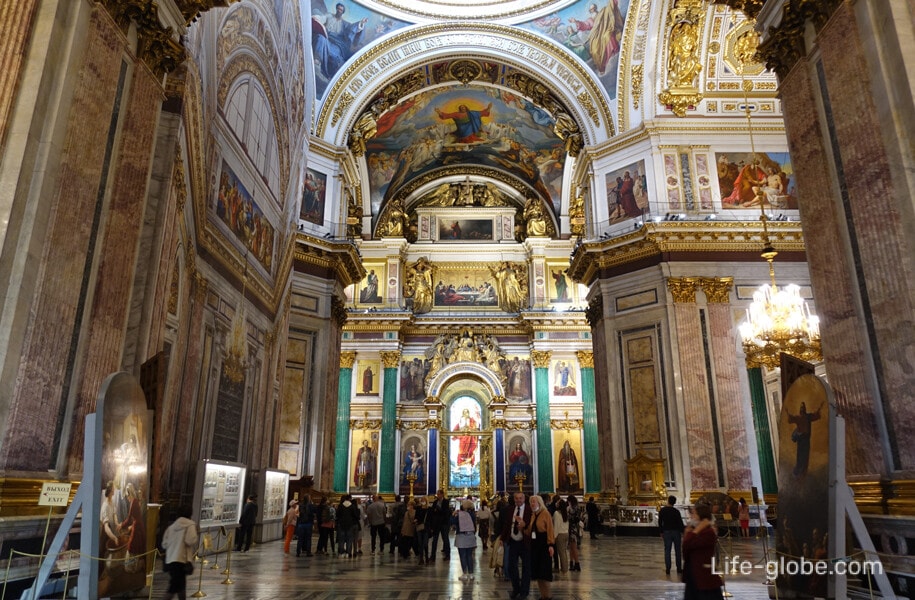
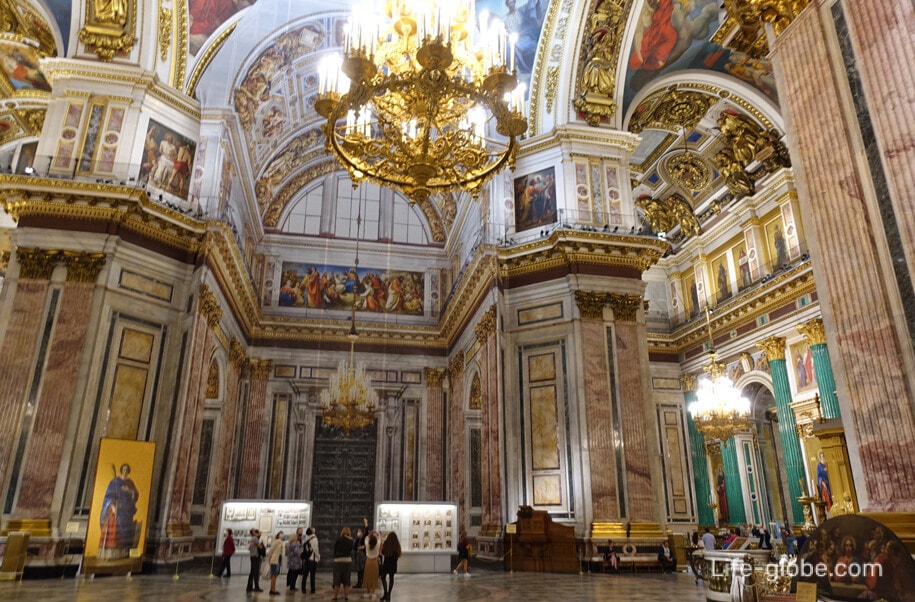
At a height of 43 meters, around the drum of the dome of St. Isaac's Cathedral, there is a colonnade consisting of 24 massive columns.
The drum has 12 giant windows, and on the open part of the colonnade there is a circular observation deck, giving beautiful 360-degree panoramic views of St. Petersburg, including the historical center and St. Isaac's Square itself.
Access to the observation deck is paid. Learn more about the colonnade and observation deck…
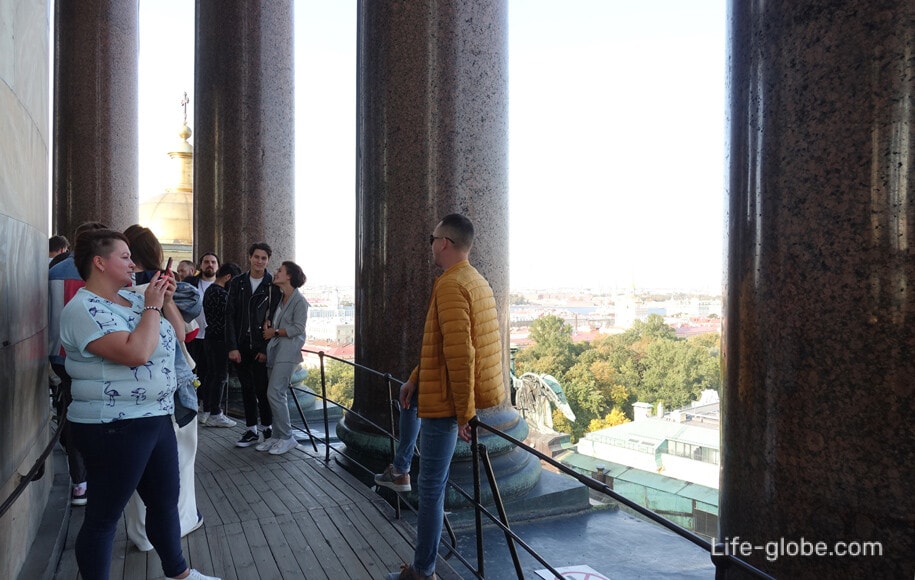

View from the observation deck of the cathedral on St. Isaac's Square
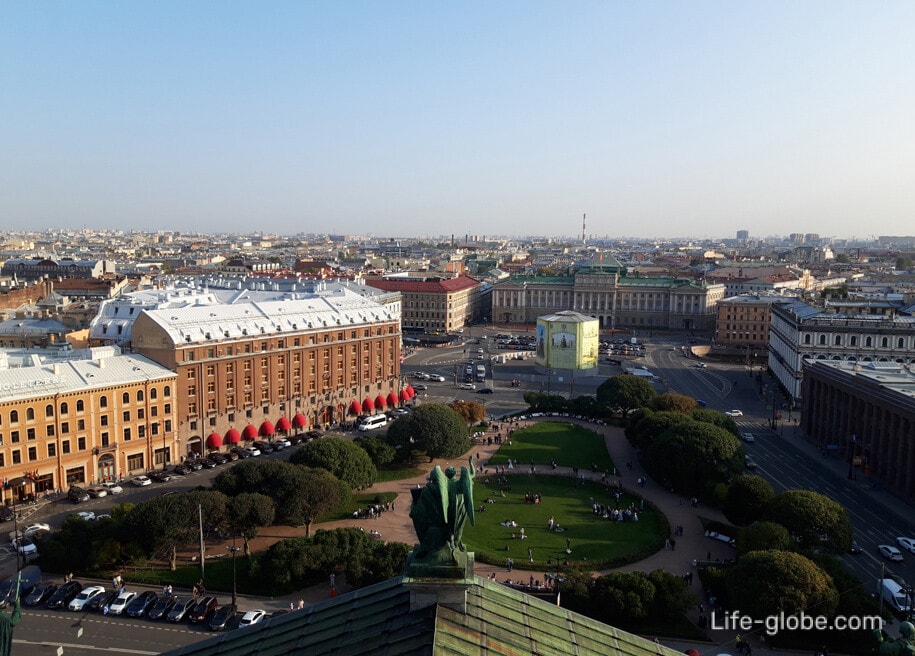
On St. Isaac's Square at number 1 there is a building in the style of classicism - Horse Guards Manege, erected in 1804-1807 according to the project of Giacomo Quarenghi for winter and summer training, as well as parade horse dressage of the Life Guards Horse Regiment.
During its history, the Manege was rebuilt several times. In Soviet times, the building was converted into a garage of the NKVD. During the Great Patriotic War, the building was badly damaged.
From 1977 to the present, the building has been used as the Manege exhibition hall. For these purposes, the arena was thoroughly restored in accordance with the original plan of Quarenghi.
Today this two-storey building is decorated with pilasters with entablature. The main facade of the arena is decorated with a portico with columns and a triangular pediment.
On both sides of the steps of the Manege, on the pedestals, there are copies of antique statues of the Dioscuri (in ancient Greek and Roman mythologies - the twin brothers Castor and Pollux), taming horses.
The Central Exhibition Hall "Manege" is the largest exposition space in the center of St. Petersburg. The main activity is holding art exhibitions and accompanying events - lectures and master classes, seminars on art and culture, film screenings and concerts. More about the Manege...

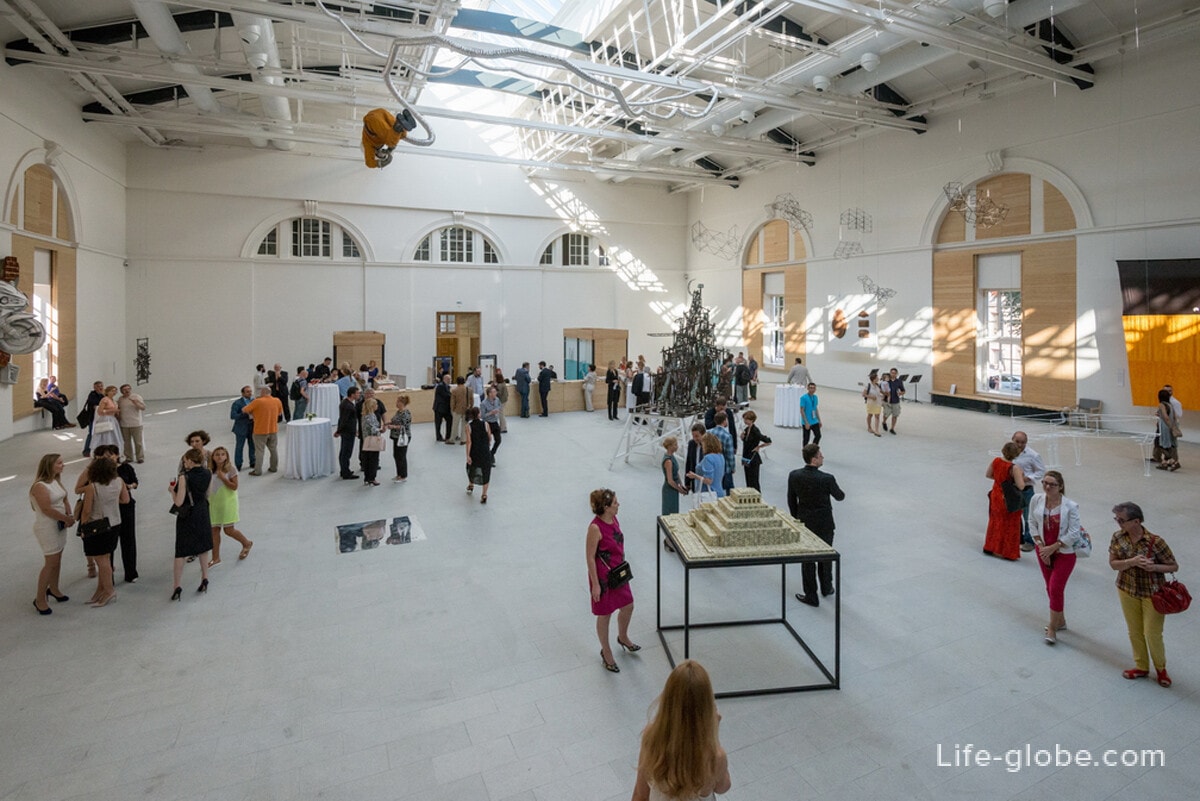
On the opposite side of the square from St. Isaac's Cathedral (south) is the second dominant square - the Mariinsky Palace.
The Mariinsky Palace was built in the first half of the 19th century by order of Nicholas I, for his daughter, Princess Maria, on the occasion of her wedding to the Duke of Leuchtenberg. The architect of the palace was A. I. Stackenschneider.
Today, the building of the former Mariinsky Palace is an architectural monument and attracts attention with its monumentality, subtly combined with the elegance of forms and the play of volumes.
From the outside, the Mariinsky Palace looks almost the same as when its doors first opened (1845).
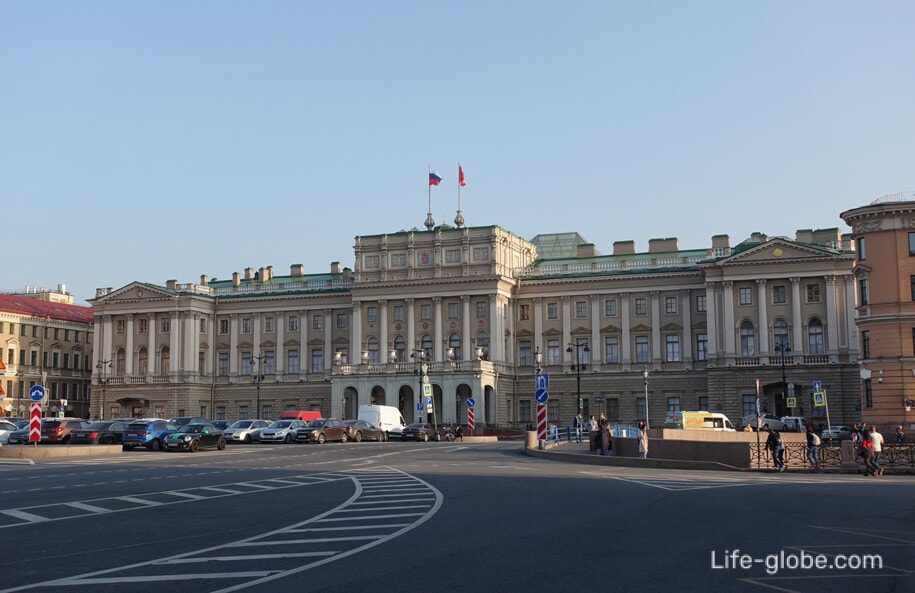
In contrast to the more strictly exterior, the interior of the Mariinsky Palace, which has changed quite a lot over the course of history, has a rich and impressive decoration.
During its history, the interiors of the Mariinsky Palace have suffered quite a lot. But since the end of the 1960s, work has been systematically carried out to recreate the historic palace, and already today some of the halls and living rooms of the palace have seen the light again - these are: the solemn and austere grand lobby and hall, the chic grand staircase, the snow-white and golden rotunda, the playful Pompeian hall and Pompeian gallery, as well as elegant halls and spacious rooms. Read more about the Mariinsky Palace with photos…

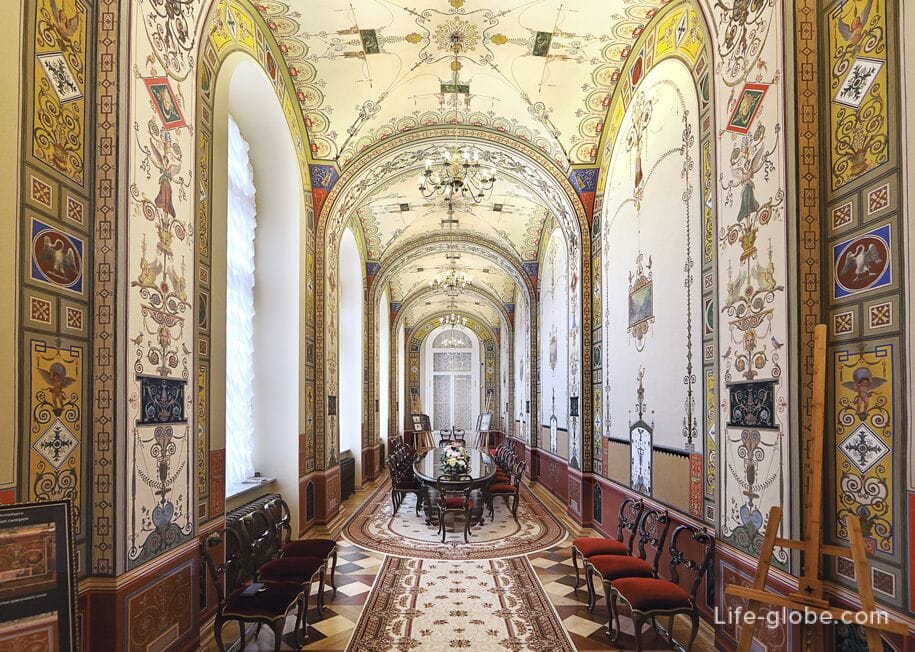
The Blue Bridge is one of the bridges over the Moika River, which is the widest bridge in St. Petersburg.
The bridge connects the center of St. Isaac's Square with the Mariinsky Palace, and due to its width (more than 97 meters), it is visually perceived as part of the square, and not as a bridge.
The name of the bridge "Blue", known since 1738, comes from the original wooden bridge, the railing of which was painted blue.
Today, part of the bridge still has a blue color. Learn more about the Blue Bridge…
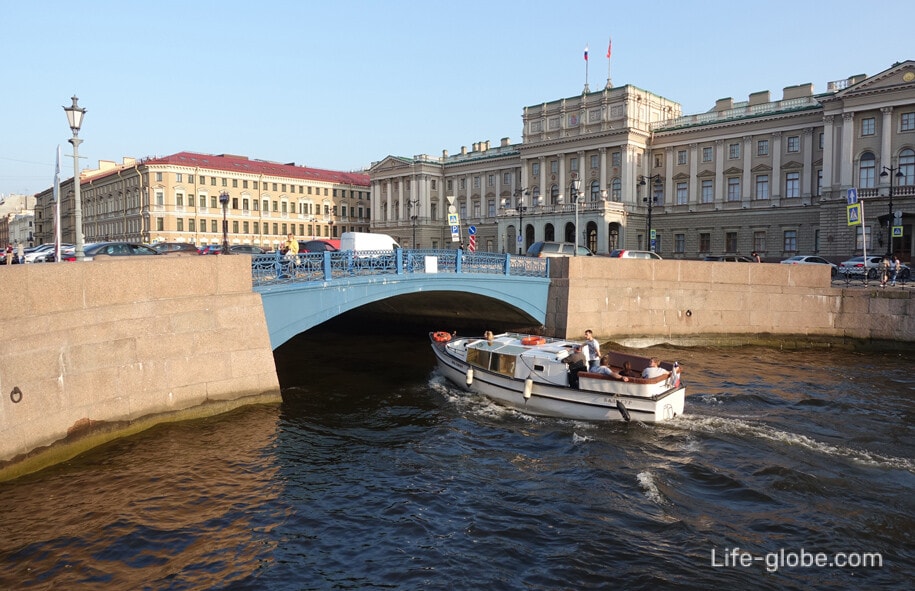
At the Blue Bridge, on the side of the center of St. Isaac's Square, there is a stele with flood marks, also known as the obelisk of the St. Petersburg flood water meter.
The granite pillar-footstool is made in the form of a four-sided obelisk and is topped with a bronze trident of Neptune with the date "1971" (the date of the construction of the pillar).
The lower part of the water measuring column goes into the water.
The level of the largest floods in the city is indicated by bronze ribbons encircling the obelisk, with dates stamped on them. The worst was the flood of 1824. Learn more about the water column…
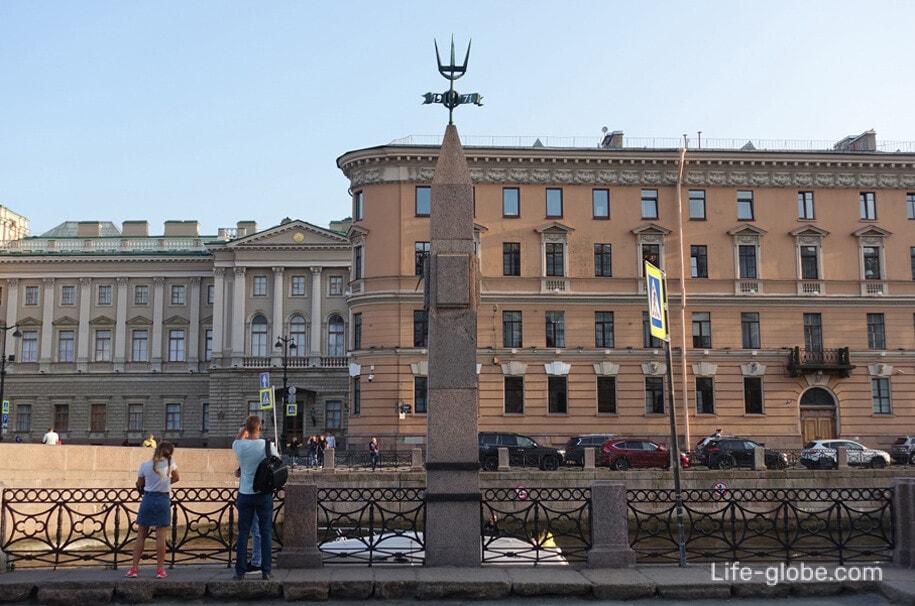
The eastern side of St. Isaac's Square, as well as the western side, is framed by a number of historical buildings, four of which are hotels.
The House of Prince Lobanov-Rostovsky - the building of the Military Ministry. The building is popularly known as the house with lions, because the front portal with an 8-column portico (entrance), facing St. Isaac's Cathedral, is decorated with sculptures of guards - two lions.
The building was built in 1817-1820 by Auguste Montferrand in the classical style, as a mansion for Prince Alexander Yakovlevich Lobanov-Rostovsky. The house was originally conceived as an apartment building-a residential structure adapted for renting apartments.
The sculptures on the facade of the building, including the legendary lions at the main entrance, are made by the Italian sculptor Paolo Triscorni.
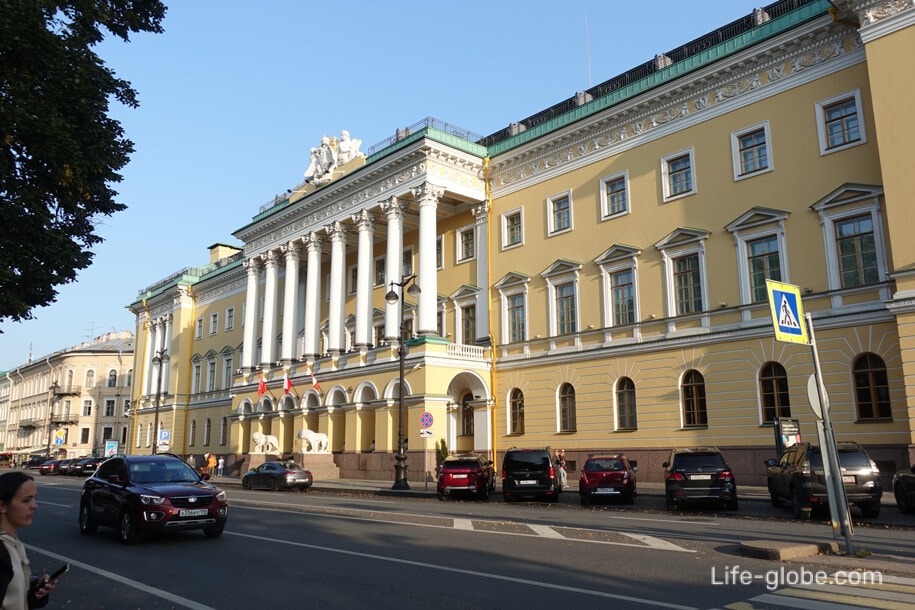
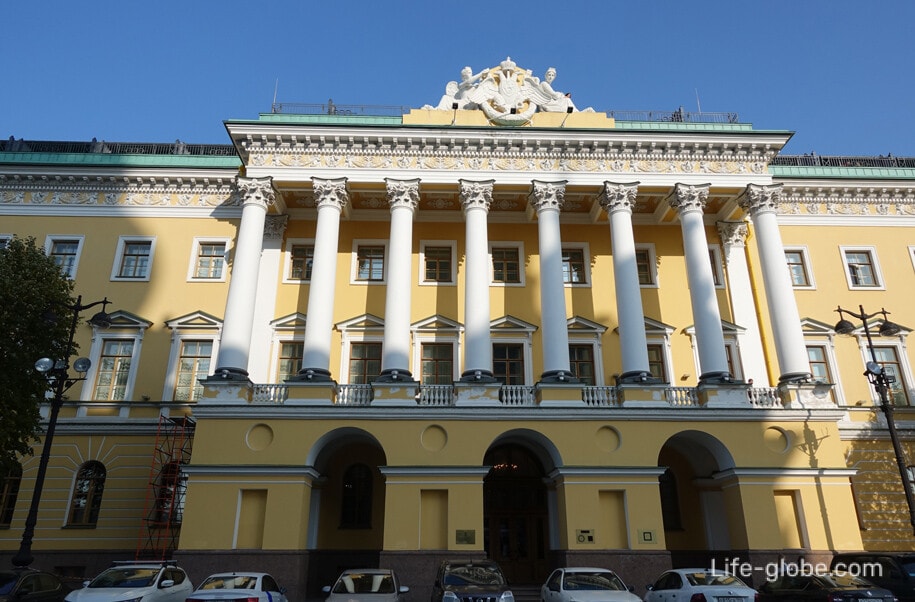
Despite the income brought by the tenants, 9 years after the completion of the construction of the house, the Lobanov-Rostovsky couple was in debt. On July 1, 1824, the 1st and 2nd floors of the mansion were leased to the War Office. Hence the second name of the building
From 1918 to 1964, the house housed a school.
In 2002, the house was taken over by the Office of the President. It was decided to create within the walls of the building the most fashionable hotel in the city, ready to receive the highest state officials.
Today, the 5-star Four Seasons Lion Palace Hotel is located within the walls of the house, with luxurious interiors in the Russian Empire style and restaurants with exclusive and refined cuisine.
The hotel also features a spa and wellness center, a swimming pool, a bar and family rooms. Link to the hotel
Building address: Admiralteiskiy Prospekt, 12 / Voznesensky Prospekt, 1 / Isaakievskaya Square, 2.

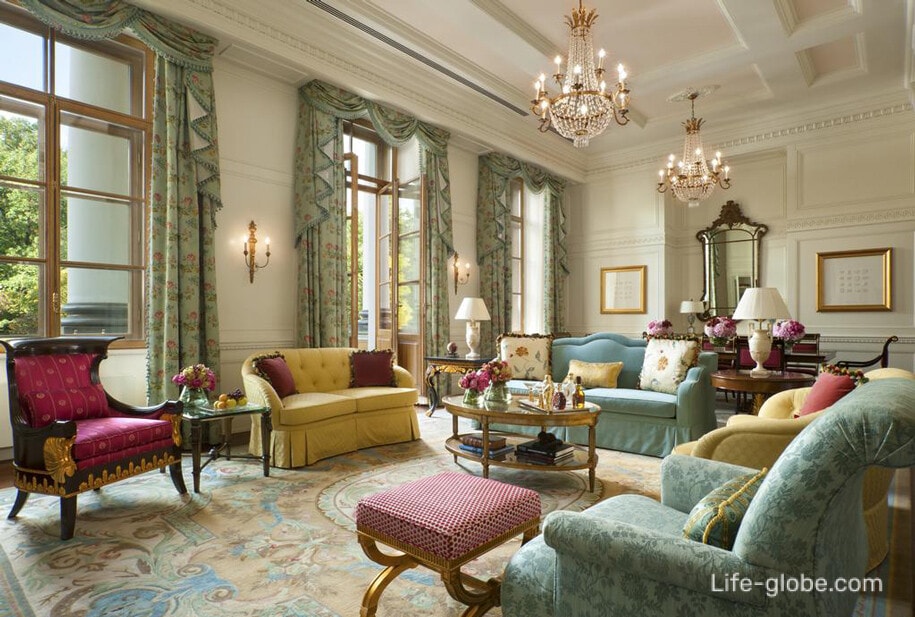
Further on, the eastern side of St. Isaac's Square is framed by two more historical hotels:
- the building of the 4-star hotel "Angleterre" (Hotel d'Angleterre), which was built in 1845-1846 as an apartment building in the village of Poggenpol.
In 1876, the house was converted into a hotel. In 1988-1991, it was completely demolished, and then recreated with the preservation of its historical appearance.
After the construction, the hotel "Angleterre" was merged into a single hotel complex with the neighboring hotel "Astoria".
The hotel has agym, sauna, swimming pool, restaurant and cafe.
Breakfast can be included in the room rate. Link to the hotel
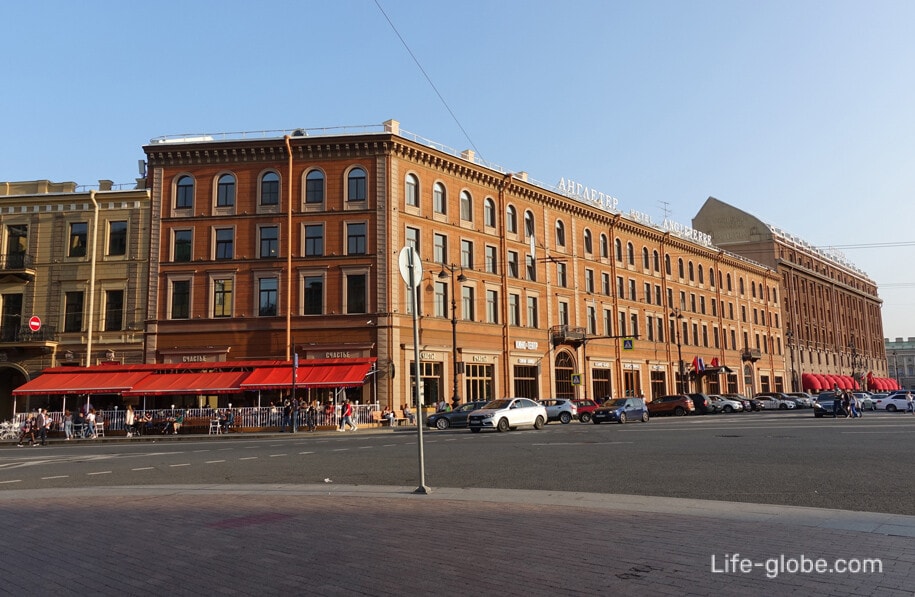

- 5-star hotel "Astoria", which from the very beginning of construction, at the beginning of the 20th century, was built as a fashionable hotel and did not change its name.
Since its opening, the hotel has been popular with influential people and celebrities.
The hotel has a loungewith live music, a restaurant, a bar, free Wi-Fi, an ATM, a swimming pool, a gym, a spa center with a sauna and a Turkish bath.
Each room of the hotel combines classic and modern, convenience and comfort.
Each room here will provide you with air conditioning, soundproofing, heating, a work desk, a flat-screen TV, a minibar, a safety deposit box, bathrobes and slippers, and a private bathroom with free toiletries.
A buffet breakfast can be included in the room rate. Link to the hotel
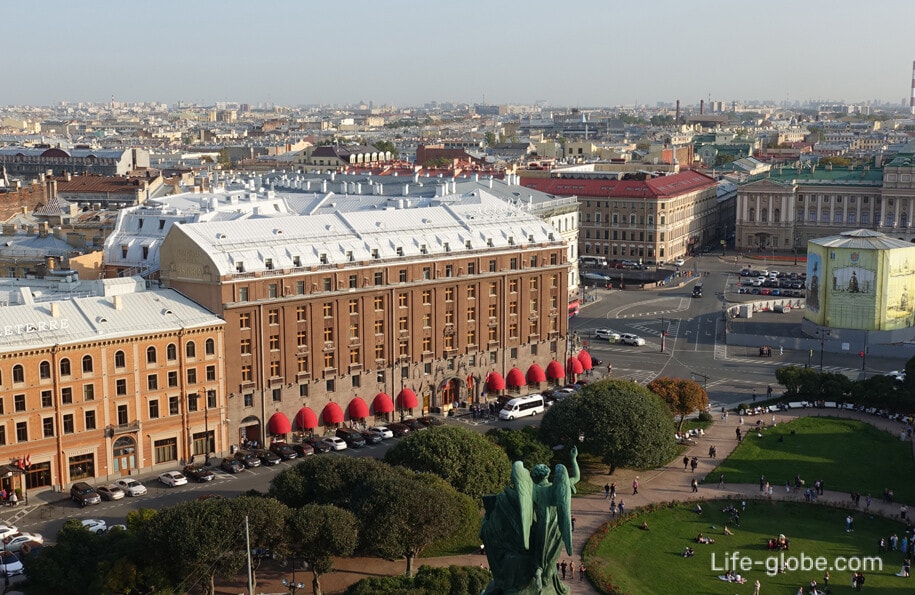
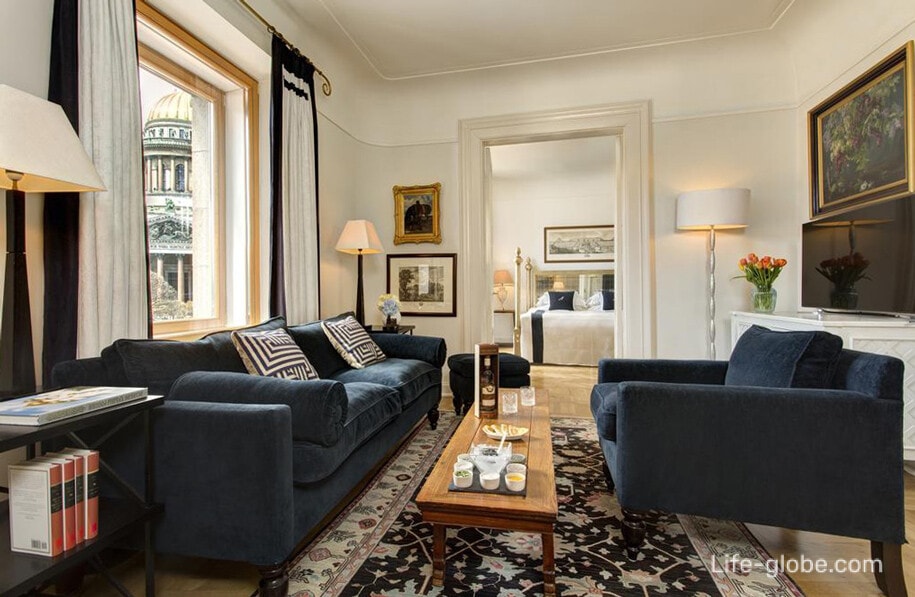
Behind the Astoria Hotel, near the monument to Nicholas I, there is a former house Ministry of State Property - State Scientific Center of the N. I. Vavilov Research Institute of Crop Production.
The building was built in 1844-1850 by the architect N. E. Efimov.
The southern wing of the building faces the Moika River embankment.

In the south-eastern corner of St. Isaac's Square, near the Mariinsky Palace and the Moika River embankment, there is a historic mansion of the 19th century.
For several years, the mansion was the personal residence of John Quincy Adams, the first US ambassador in the history of the Russian Empire. A little later, one of the departments of the Ministry of Internal Affairs was located in the house. Then the mansion was bought by Mrs. Yakunchikova, who decided to turn it into an apartment building - on her initiative, the building was rebuilt by the architect N. Ye.Efimov. In 2014, the company Lotte Hotels & Resorts began the renovation of this historic building with the aim of placing a luxury hotel within its walls.
Today, the 5-star Lotte St. Petersburg Hotel is located within the walls of the former mansion.
The rooftop bar offers views of St. Isaac's Cathedral.
Guests can enjoy free access to the modern fitness center and the Mandara Spa's water area.
In the hotel: restaurant, bar, free Wi-Fi and underground parking.
The rooms are equipped with: coffee/tea maker, digital panel with which you can control air conditioning, heating and lighting. In the bathrooms: bidet, bathrobes, slippers and toiletries.
The suites offer views of St. Isaac's Square and the Mariinsky Palace. A turndown service is available in each room.
Breakfast can be included in the room rate. Link to the hotel
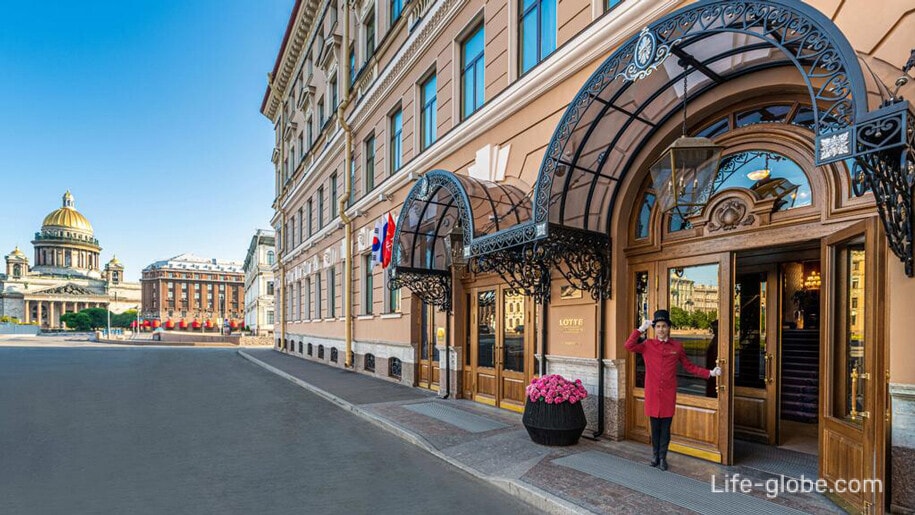
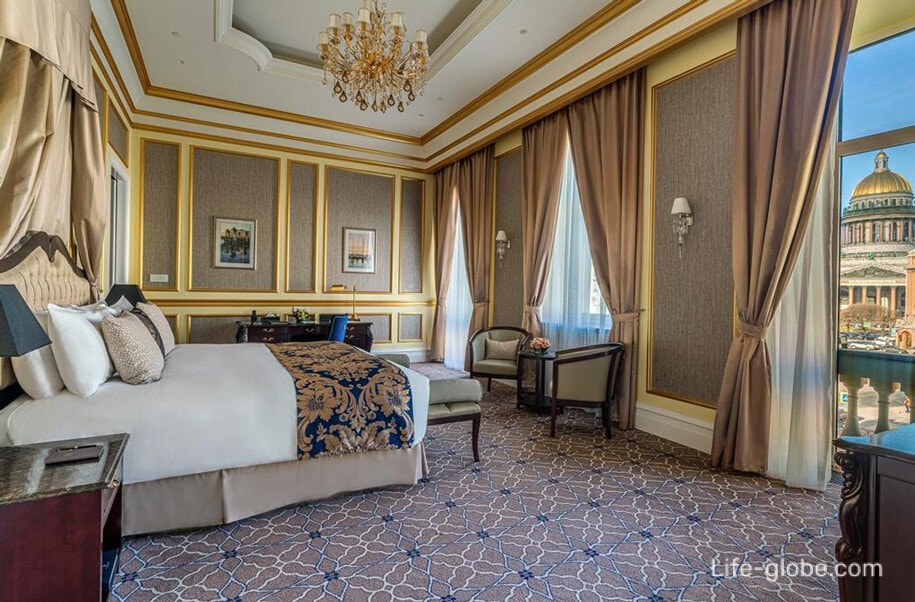
The western side of St. Isaac's Square, from St. Isaac's Cathedral to the Moika River, is framed by historic buildings:
- the mansion of K. L. Miller (as well as an apartment building), which were rebuilt in 1879-1880 by the architect and academician Ferdinand Loginovich Miller in the eclectic architectural style based on old buildings of the late 18th century;
- Zubov Mansion - Russian Institute of Art History, with courtyard wings;
- Kitner apartment house, originally built in the mid-18th century (author not identified);
- the house of the Myatlevs (the house of Myatlev), built in the style of early classicism by an unknown architect, as a residential residence. The approximate date of construction of the house - 1760-ies, in connection with which this house is considered the oldest surviving building on St. Isaac's Square.
From the 18th century until the revolution of 1917, the house belonged to the Myatlev family. Hence the name of the house.
From the 1990s to the present, the building houses the city Prosecutor's Office;
- the house of the German Embassy, built in 1911-1913 in the neoclassical style by the German architect Peter Behrens.
Today the building houses the Main Department of the Ministry of the Russian Federation;
- the former house of the Ministry of State Property, built in 1847-1853 by architects N. Ye. Efimov and L. L. Bonstedt. The southern facade of the building faces the Moika River embankment.
In the photo below from top to bottom (left): the house of the Myatlevs, the house of the German Embassy, and the house of the Ministry of State Property. Photo taken from the colonnade of St. Isaac's Cathedral
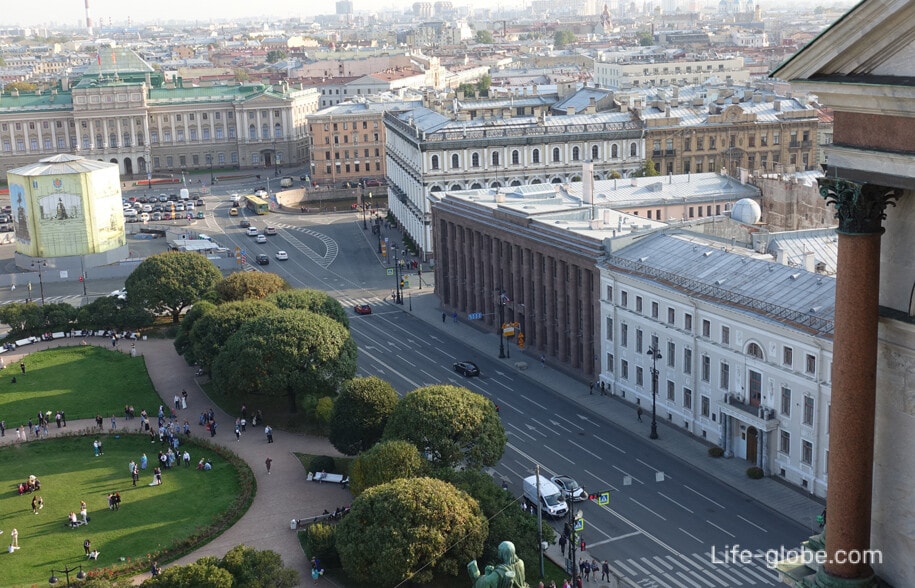
All accommodation facilities in St. Petersburg, including in the city center and near St. Isaac's Square, can be viewed and booked here